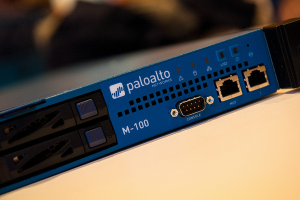The Truth About Enterprise Cloud Adoption
You’re Damn Right I Cloudwashed!
In early 2009, members of the Electrical Engineering and Computer Sciences Department from the University of California at Berkeley wrote a paper entitled “Above the Clouds, A Berkeley View of Cloud Computing.“
In that paper, the authors made the following assertion:![]()
Cloud Computing refers to both the applications delivered as services over the Internet and the hardware and systems software in the datacenters that provide those services. The services themselves have long been referred to as Software as a Service (SaaS). The datacenter hardware and software is what we will call a Cloud. When a Cloud is made available in a pay-as-you-go manner to the general public, we call it a Public Cloud; the service being sold is Utility Computing. We use the term Private Cloud to refer to internal datacenters of a business or other organization, not made available to the general public. Thus, Cloud Computing is the sum of SaaS and Utility Computing, but does not include Private Clouds.
You can bet that last statement freaked out more than a few marketing folks at the big enterprise IT whales. Since that time we’ve seen cloud mania explode and everyone – even Larry Ellison – is on the bandwagon. IBM, HP, Microsoft, Cisco, Intel, EMC, VMware, Oracle and virtually every other enterprise IT vendor have put forth a cloud roadmap in the form of services, converged infrastructure, virtualization or sometimes even “True Cloud” offerings (e.g. EMC’s Mozy, Microsoft’s Azure, etc.)
What do I mean by “True Cloud.” Let’s go back to the Berkeley definition where the authors laid out three attributes of cloud:
- The illusion of infinite computing resources available on demand, thereby eliminating the need for Cloud Computing users to plan far ahead for provisioning.
- The elimination of an up-front commitment by Cloud users, thereby allowing companies to start small and increase hardware resources only when there is an increase in their needs.
- The ability to pay for use of computing resources on a short-term basis as needed (e.g., processors by the hour and storage by the day) and release them as needed, thereby rewarding conservation by letting machines and storage go when they are no longer useful.
Excluding service providers, does that sound like any IT shops that you know? The reality is that while CEOs are demanding this type of service, traditional enterprise IT organizations aren’t anywhere near fulfilling this vision – not even close. Sure they’re virtualizing more systems and applications and that’s cutting costs –but a) on demand; b) no upfront CAPEX and c) pay-as-you-go? No way.
Here’s an interview I did with Jeff Kubacki, the CIO of Kroll last year. It’s like a zillion other conversations I’ve had with CIOs about cloud computing. Skip ahead to about 50 seconds in to get to the meat where Jeff says “I want capacity on demand…I need variable costs…I only want to pay for what I use.” It’s clear from Jeff’s remarks that he, like other CIO’s is not close to realizing this vision and his core vendors aren’t providing the answers.
The reality is that only about 15% of IT organizations in the U.S. even have formal chargeback mechanisms in place. And fewer than that are delivering so-called IT-as-a-service. But that’s just what everyone’s saying they’re trying to deliver. Maybe you think it’s just semantics but I don’t.
The truth is that for most IT organizations, virtualization is cutting costs and simplifying infrastructure BUT…
- They’re still paying upfront costs
- They’re still paying for unused capacity and depreciating assets
- They’re still licensing software and paying maintenance by the box
- They’re still locked into a few key vendors
They want their vendors to offer them true cloud. They want on-demand but they’re getting cloudwashed.
Here’s the bottom line. CEOs are looking at the consumerization of IT all around them and are demanding true cloud. IT is responding with virtualization and a vision of IT-as-a-service. The translation is – “our resource utilization is much better so our capital hit is eased; but: 1) we still need to carefully plan capacity; 2) we still have big up-front CAPEX in the form of multi-million dollar server, storage and network infrastructure costs and 3) we really don’t pay-as-you-go. But we’re creating the illusion that we’re cloud-like and hoping the board backs off.”
Is Cloud Disruptive or is it a Fad? ![]()
If you believe cloud is disruptive and will completely alter business technology models than guess what? The above scenario is not sustainable. It’s not cloud. Maybe that’s okay but since business/IT alignment is such an important concept; if the CEO expects true cloud and IT delivers “half-assed cloud” then there could be trouble ahead. The key for CIOs in my view is to set expectations and be realists. Don’t hang on to an outdated model for the wrong reasons. Figure out which parts of the business can be made true cloud-like and go for it.
Having said that I agree with Stu Miniman in his recent piece on hybrid clouds where he says:
The reality for cloud environments is that they will need to coexist with all of the legacy environments.
And therein lays the problem. The heterogeneous mess that is today’s IT makes it next to impossible for the CEO to get true cloud across the board anytime soon. But the fact is there are major portions of IT that can be outsourced and we’re seeing evidence of that today.
Storage as a True Cloud Opportunity![]()
Recently, executives from several cloud startups have been making the rounds. Just this month we’ve met with cloud suppliers Nasuni and Cirtas who just each received major funding and also Nirvanix who has brought in Scott Genereux (former HDS, DDN, QLogic sales king) as the new CEO. The main themes we heard are consistent with one of my 2011 predictions, namely that the cloud will become a new storage tier this year. Of the three companies, Nirvanix is a provider of cloud storage services whereas Nasuni and Cirtas provide access to the cloud. While both types of offerings are important and complementary, I’m most intrigued by the idea of completely outsourcing storage to the cloud and storing enterprise data offsite.
According to research conducted by CSC’s Leading Edge Forum, cloud adoption accelerated by 12-18 months as a result of the 2008-2009 recession. Most of that adoption came in the form of projects on Amazon EC2 and S3 and other public cloud players such as Google. The problem with this from my perspective is Amazon and Google don’t offer enterprise-class SLA’s and have other restrictive issues that are not conducive to catalyzing enterprise adoption. As EMC CEO Joe Tucci sums up public cloud SLA’s – “we’ll do our best but if we fail, don’t call us.”
But as witnessed by Nirvanix we’re starting to see some traction in true enterprise cloud adoption. Steve Duplessie wrote a nice post about Nirvanix that’s worth a read if you want some background info on this little-known company. What’s most interesting to me is that the business model put forth by Storage Networks, Inc. ten years ago is now finally viable. The problem with SNI was that it was trying to outsource workloads that shouldn’t have been outsourced; namely structured data, often on tier one systems. The fact is these devices need to be close to the processor in order to perform properly. But when you peel the onion on the Nirvanix use cases you find that it’s virtually all unstructured content– the perfect candidates for cloud and by far the fastest growing data type.
Fred Moore, a technology consultant and principal at Horison Information Strategies has studied information management for decades and has found that 2/3rds of enterprise data is tier three or higher. These are precisely the data candidates that companies like Nirvanix are going after. And at $0.25 per gigabyte (list) with all the attributes of true cloud, it’s easy to understand why Comcast, NBC/Universal, Fox, Cisco, Logitech, GE and 694 other customers are storing their data in the Nirvanix cloud.
So what should users be looking for in a true enterprise cloud offering? Here are ten attributes that I would put high on the list:
- Guaranteed quality of service (QoS) in writing
- 24x7x365 support with dedicated engineers that are available by phone if necessary
- The ability to conduct on-premise security audits and data center inspections
- Flexible security incident reporting to match corporate edicts
- Support for hybrid or federated clouds
- Geographic control of where data is stored
- An ecosystem that provides bench strength to the cloud service provider
- A solid backup and disaster recovery story
- True cloud attributes including self-service, elastic capacity, pay-as-you-go, no upfront fees, etc
- Dirt cheap prices
If you’re trying to be more cloud-like and are looking to go beyond cloudwashing, then find suppliers that offer such services and begin to pilot the creation of a cloud tier for non-transactional data.
Are you aware of other services like the ones described here and what experiences do you have with them?
[Cross-posted at Wikibon Blog]
A message from John Furrier, co-founder of SiliconANGLE:
Your vote of support is important to us and it helps us keep the content FREE.
One click below supports our mission to provide free, deep, and relevant content.
Join our community on YouTube
Join the community that includes more than 15,000 #CubeAlumni experts, including Amazon.com CEO Andy Jassy, Dell Technologies founder and CEO Michael Dell, Intel CEO Pat Gelsinger, and many more luminaries and experts.
THANK YOU













